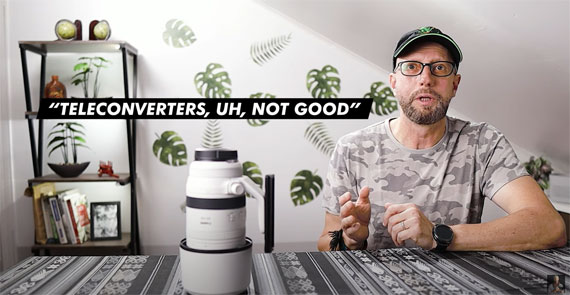Photography enthusiasts often feel that their equipment is holding them back, particularly when it comes to bird and wildlife photography. There is a common belief that capturing professional-quality images requires top-of-the-line gear that could potentially cost as much as a new car. However, according to professional nature photographer Greg Basco, this simply isn’t the case. His recent video highlights the potential of telephoto zoom lenses as a more affordable and accessible alternative to pricey prime lenses, specifically for bird and wildlife photography:
Basco acknowledges the allure of large, expensive telephoto prime lenses. The fantastic image quality, snappy autofocus, and effective use of teleconverters are undeniably attractive. However, he also points out their drawbacks: their cost (ranging from $11,000 to $15,000) and their weight (between six and seven pounds), which can make them challenging to carry around and travel with.
In contrast, telephoto zoom lenses, available for under $3000, can also produce pro-quality bird and wildlife photography. Basco shares his experience using Canon’s 100-500mm RF zoom lens and Sigma’s 150-600mm contemporary zoom lens, which he managed to acquire for just $600. Despite being less expensive and lighter, these lenses still deliver in terms of autofocus, image stabilization, and sharpness.
Of course, cheaper telephoto zoom lenses come with their own limitations. They gather less light, which requires more ISO to maintain the same shutter speed as with prime lenses. However, Basco suggests that advancements in software like DxO PureRaw and Topaz DeNoise AI make this less of an issue.
Another drawback of telezooms is that they are limited in terms of focal length, meaning they may struggle to blur out the background of your photos. However, Basco sees this not as a limitation but as an opportunity for creativity. It pushes you out of the “mental jail” of consistently filling the frame, allowing for more diverse, story-telling shots.
The inability to consistently fill the frame with the subject can compel photographers to embrace the smaller size of the subject in the frame. This, according to Basco, can result in photos that tell a story and give a sense of place. For example, while a photo of a single Chilean Flamingo may be beautiful, an image of a group of flamingos at a distant Salt Lake in the Atacama Desert provides context and tells a more compelling story.

A key advantage of using telephoto zoom lenses is that they force you to consider how the background can contribute to the composition of your photo. This, in turn, enables you to consider how you can use light, tones, and colors in different parts of a wider scene to enhance your exposure. These constraints can improve your overall photography skills.
So, whether you’re a budding wildlife photographer on a budget or a seasoned professional wanting to diversify your portfolio, telephoto zoom lenses could be the tool you’ve been waiting for. They offer an affordable and more accessible entry into professional-quality bird and wildlife photography while also challenging you to think more creatively about your composition and use of light.
Basco’s message is clear: great photography is about more than just your equipment. It’s about embracing what you have, thinking creatively about your shots, and making the most of the conditions. It’s a democratic view that makes bird and wildlife photography more accessible to all – and one that could indeed revolutionize your own approach to the field.
- - - - - - - - - - - - - - - - - - - - - - - - - - - - - - - - - - - - - - - - - - - - - - - - - - - - - - - - - - - - - - - - - - - - - - - - - -
Did you appreciate this newsletter? Please help us keep it going by Joining Our Patreon Supporters
What are your thoughts on this article? Join the discussion on our Facebook Page
PictureCorrect subscribers can also learn more today with our #1 bestseller: The Photography Tutorial eBook
- - - - - - - - - - - - - - - - - - - - - - - - - - - - - - - - - - - - - - - - - - - - - - - - - - - - - - - - - - - - - - - - - - - - - - - - - -
The post Lens Considerations for Pro Wildlife Photography appeared first on PictureCorrect.
from PictureCorrect https://ift.tt/ANpaKO6
via IFTTT






0 kommenttia:
Lähetä kommentti